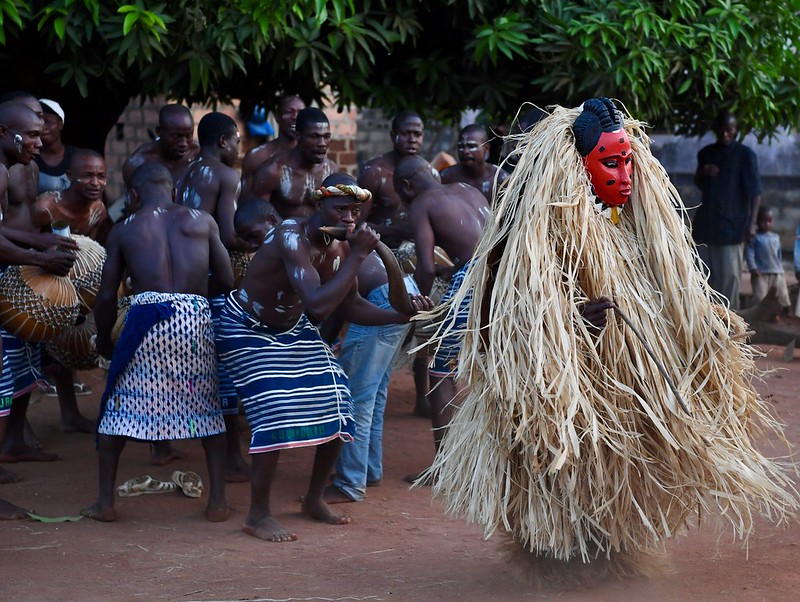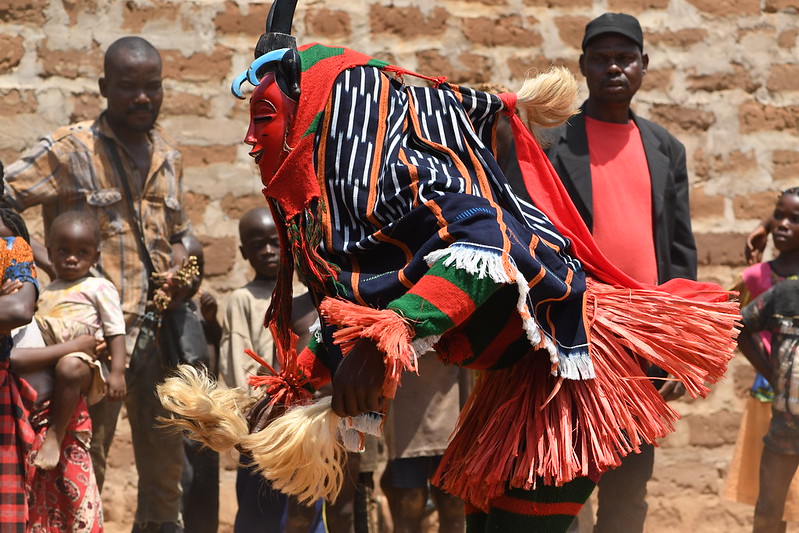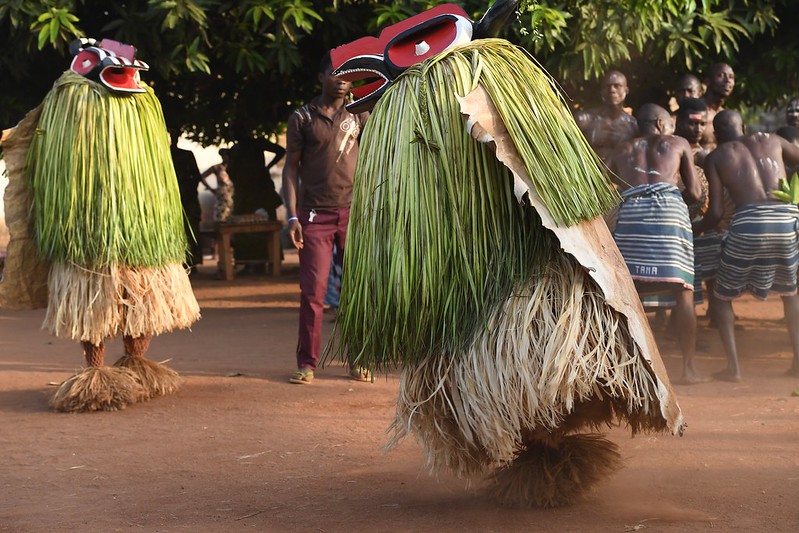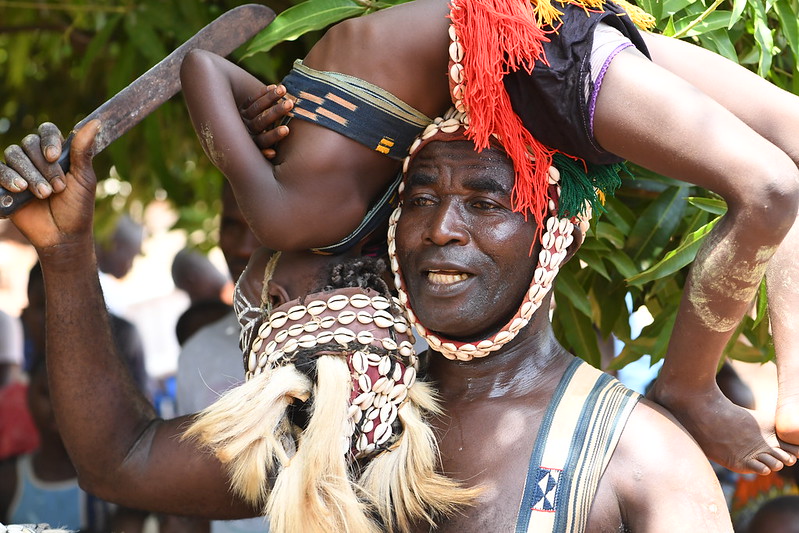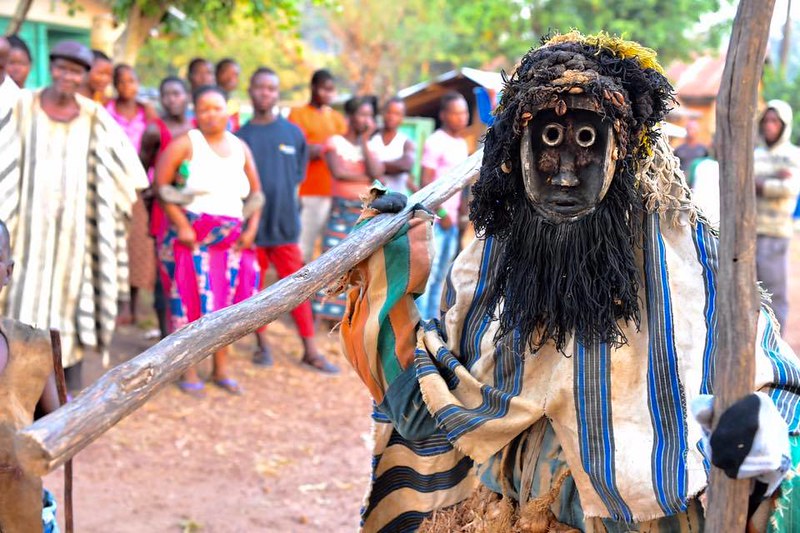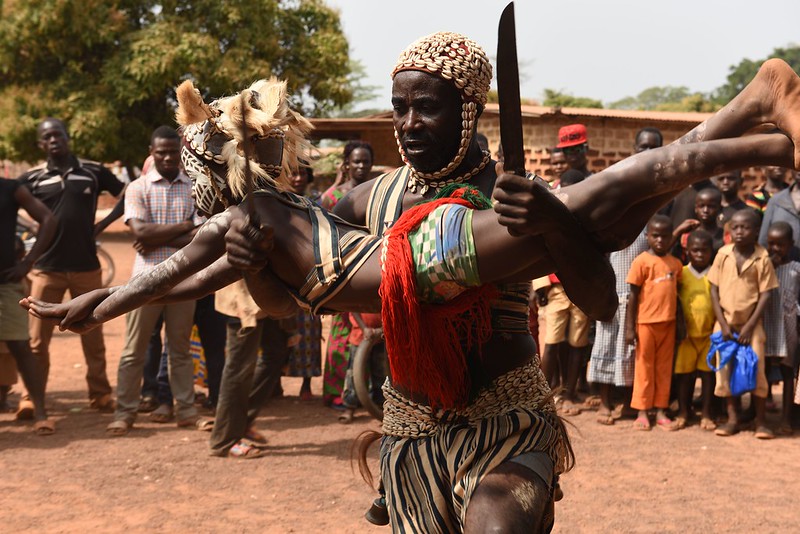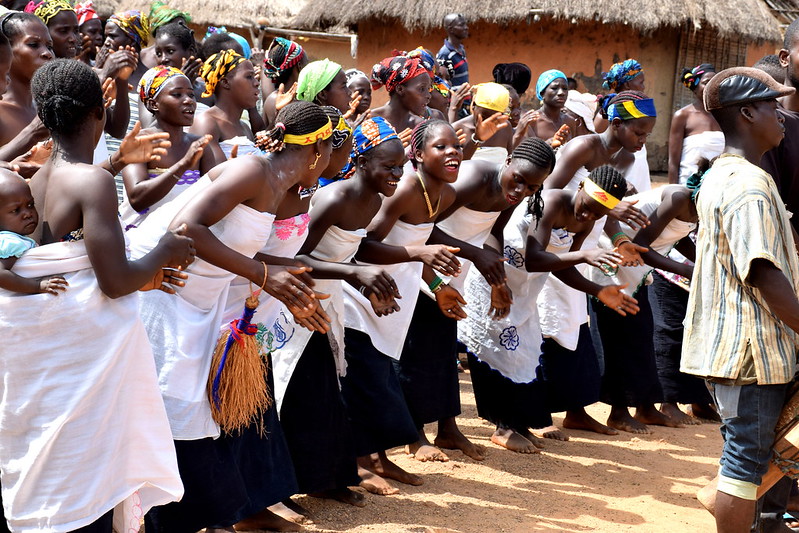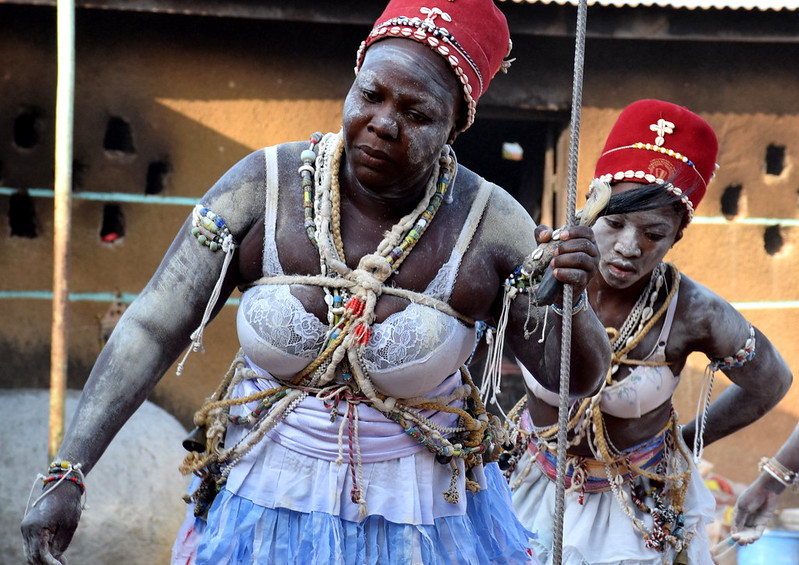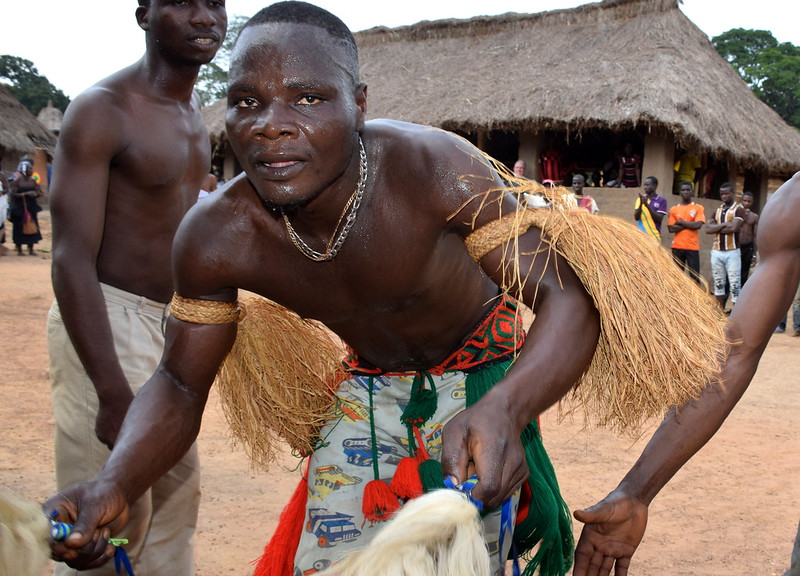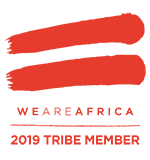The festivals of Ivory Coast are the better way to get to know a population. To understand the ethnic groups of Ivory Coast it is absolutely necessary to attend the initiation ceremonies, the rituals animated by dances and the sounds of drums, flutes and gourds used as musical instruments .
Goli masks
The dance of the Goli masks is performed by the Baoule ethnic group. During this dance two types of masks appear in the village: human-looking masks called “kpan” and disk-faced masks called “Kple-Kple”. The performance is very theatrical to obtain the maximum effect. The women sing and dance advancing towards the men and inviting them to come closer, welcoming the masks as if they were their lovers. Joking themselves, they dance joyfully behind the masks. Kple-Kple masks, in particular, are invoked in case of a danger or during funeral ceremonies: it is believed that they have the power to connect people with the world of spirits and the supernatural and that they can influence for better or for worse their lives.
Zaouli masks
Zaouli is a traditional dance of the Guro people. The Zaouli mask, used in the dance, was created in the 1950s, reportedly inspired by a girl named “Djela Lou Zaouli”. However, stories about the origins of the masks are varied and each mask can have its own symbolic history.
Senoufo initiation
The Senufo are renowned for their complex initiation rites. The male initiation rite is a long process which takes 21 years to be completed. It is the passage from youth to adulthood and it consists in learning the social and religious secrets that turn a boy into a genuine Senufo man. The most spectacular Senufo male mask dance is the Boloy, known as panther dance, performed by initiated.
The dance of the virgin girls, called Ngoro, is part of the female initiation. After seven years there is a big celebration for those who have undergone all stages of initiation. In particular the dance of the virgin girls is performed at the end of the first stage of initiation.
Guere masks at Man
Masks show up from the forest. In the cosmogony of the Guéré people, there is a creator god that communicates with humans only through its intermediaries, the masks. During the mask dance the distance between the human and the spirit worlds disappears. The cosmic and the social orders are restored, and gratitude is expressed to the gods and the ancestors.
Jongleurs’ dance
The dance of the knives, or “jongleurs’ dance”, involves dancers who make the children fly in the air exposing them to the risk of falling on the knives: the strength and skill of the dancers on the one hand, and the imperturbability of the children on the other hand, go beyond any imagination . The dance is rarely performed in the presence of foreign visitors.
Komian divination
The Akan people of the Ivory Coast use the word “Komian” to refer to trance, that is to say a spiritual possession. This term can also be applied to people and in this case it refers to those people, mainly women, who have been initiated to communicate with the world of spirits through different divinatory ways, such as the throwing of shells, the vision on water or the dance. Dance is indeed the most spectacular divinatory form and is called to solve the most complex problems. Facing the interlocutor, some family members and the curious crowd, accompanied by the rhythm of tam-tams, the Komian does a ritual dance until she reaches the status of trance: the spirit will then manifest itself at the “opening of her mouth” and will indicate the nature of the problem and the way forward.
Abissa festival at Grand Bassam
Abissa is the main festival in the N’zima calendar, celebrating the time of renewal and forgiveness. It is dedicated to Nyamie, Akan name which designates the supreme deity. The festival lasts 14 days and throughout the period the work activities or social ceremonies such as weddings and funerals are suspended. The Abissa festival is animated by percussionists who guide the dances and rituals at a frenetic pace. The beat of the cosmic drum frees the N’zima from all the usual restrictions and allows them to speak freely to the leaders and to each other. It is the moment of collective catharsis that leads to the renewal and rebirth of the entire community. Another peculiarity is that during Abissa men dress as women and vice versa.
At the time of the accusation-repentance ritual, people disguise themselves to identify themselves with those they have wronged. At the end of the ritual everyone is forgiven for their mistakes.

